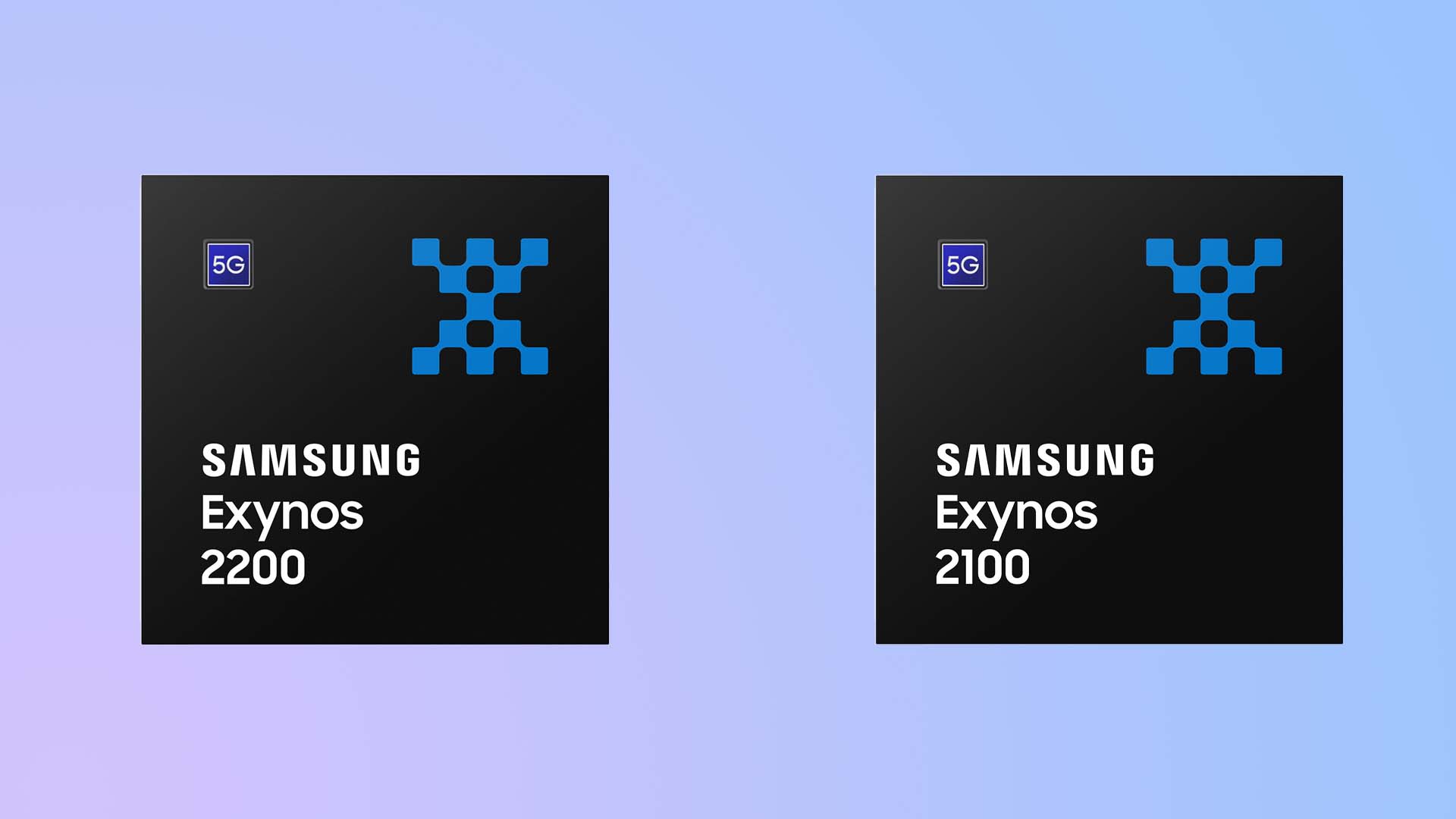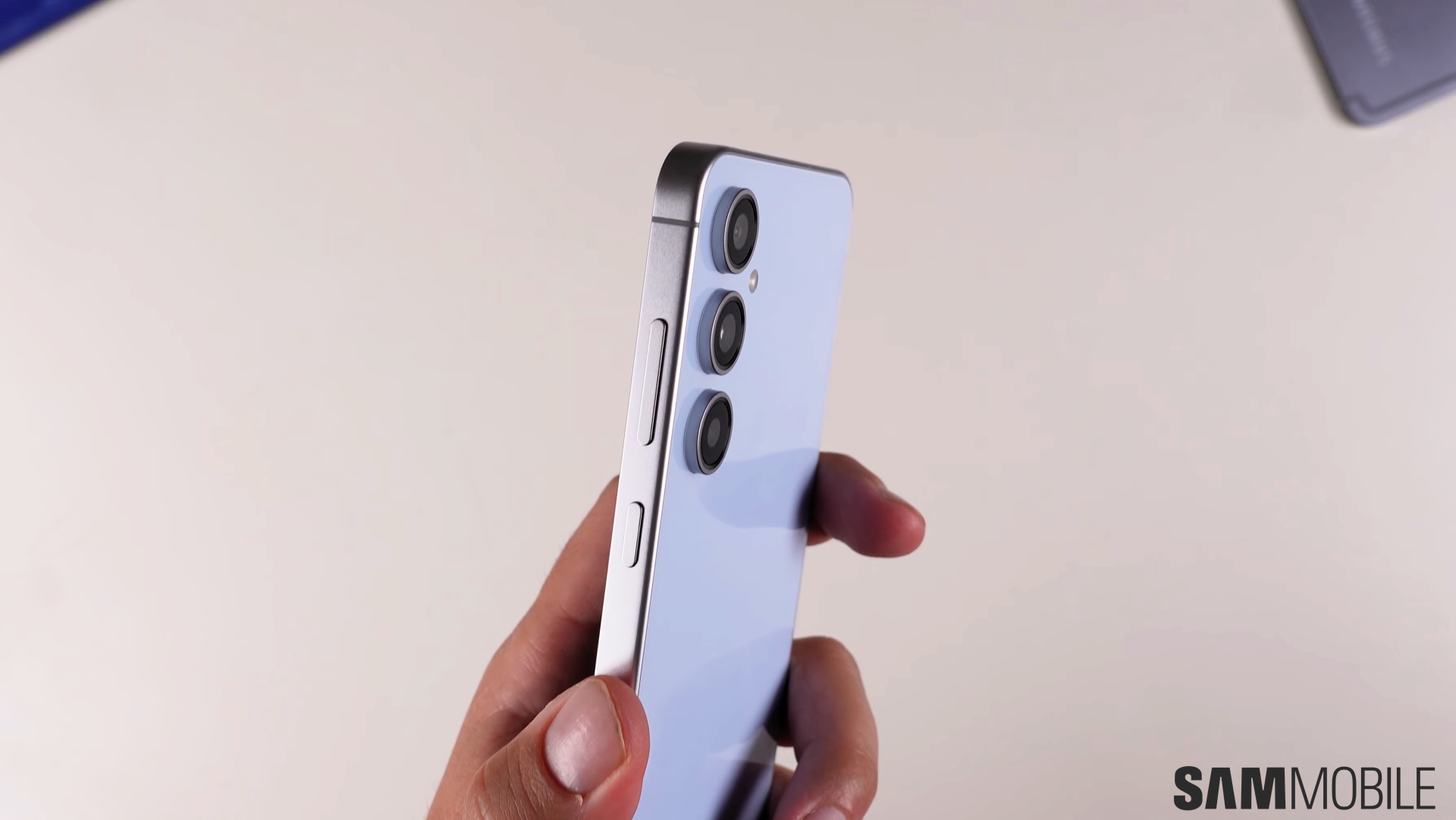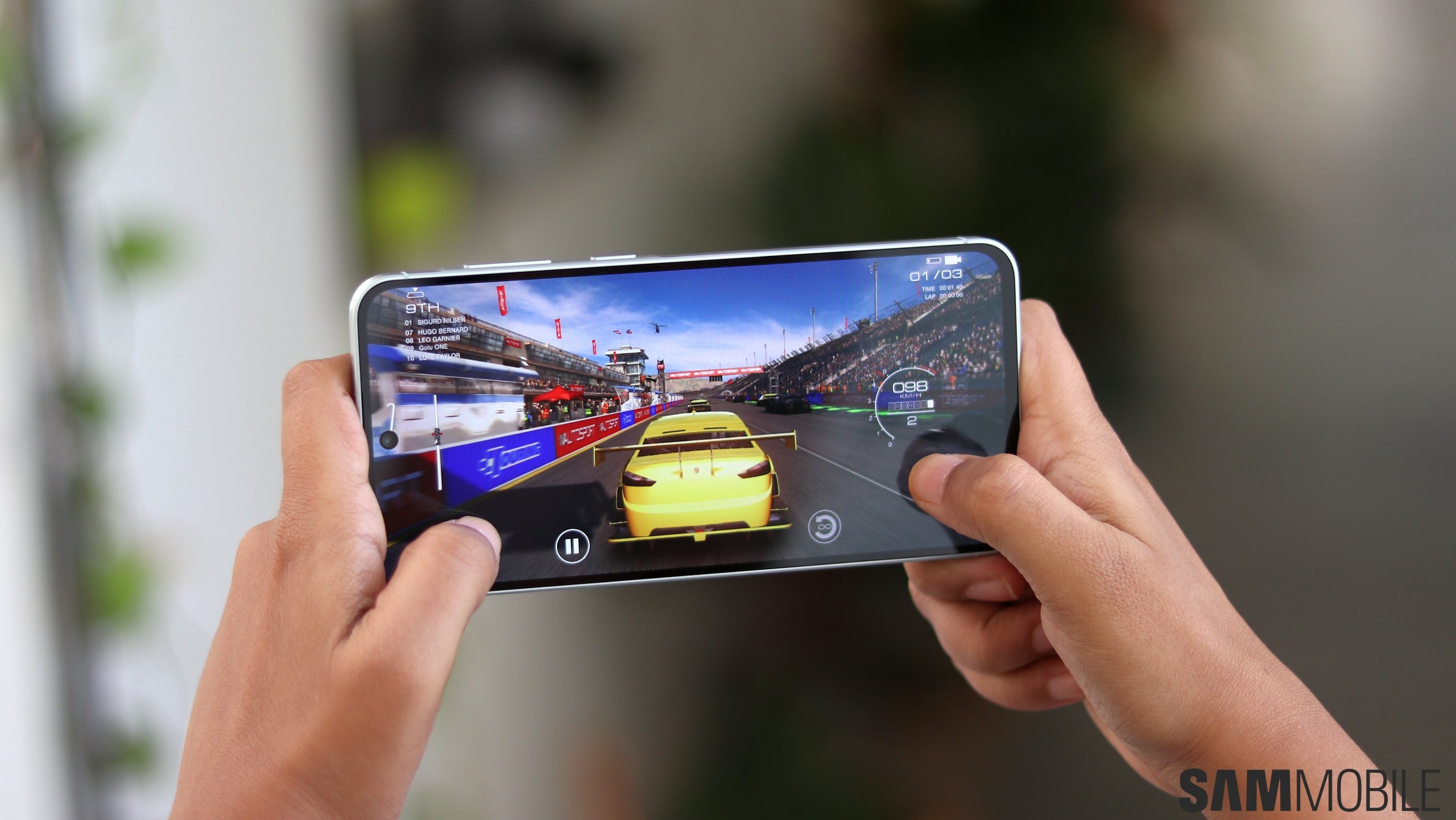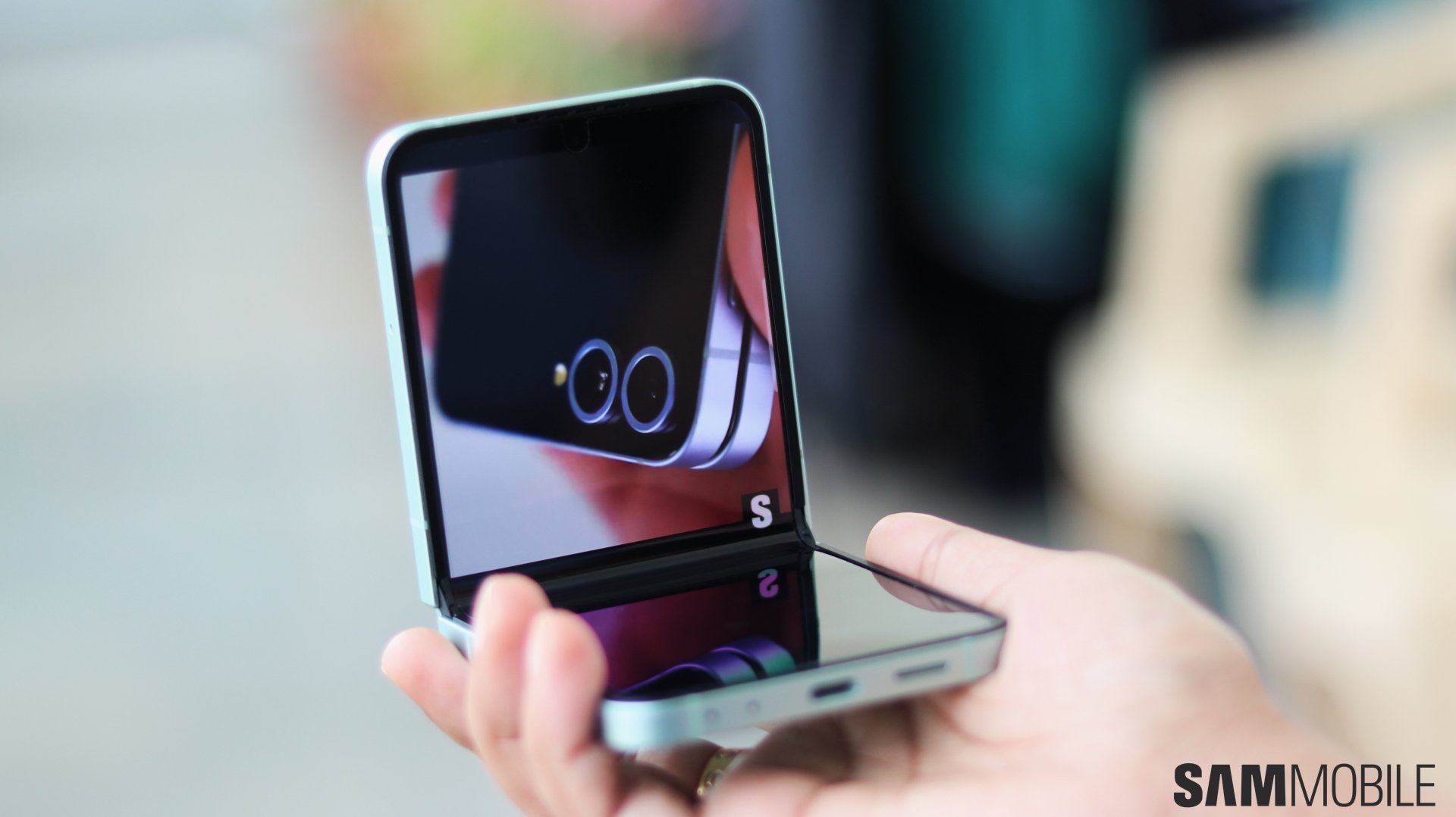
With its new chipset, the company is focusing on improved gaming performance. The company said in its press release that the Exynos 2200 “will redefine mobile gaming experience” and that the AMD RDNA 2-based Xclipse 920 GPU will “bring an end to the old era of mobile gaming and mark the start of an exciting new chapter.”
But, how does it compare to the Exynos 2100 from last year?
Exynos 2200 vs Exynos 2100 Specifications
| Exynos 2200 | Exynos 2100 | |
| Fabrication Process | 4nm EUV | 5nm EUV |
| CPU | 1x Cortex-X2 + 3x Cortex-A710 + 4x Cortex-A510 | 1x Cortex-X1 + 3x Cortex-A78 + 4x Cortex-A55 |
| GPU | Xclipse 920 (Based On AMD RDNA 2) With Ray-Tracing, VRS | ARM Mali-G78 MP14 |
| DSP | 4K 120Hz, QHD+ 144Hz | 4K 120Hz, QHD+ 144Hz |
| NPU | Dual-Core (With 2x Performance Over Exynos 2100) | Triple-Core |
| RAM | LPDDR5 | LPDDR5 |
| Storage | UFS 3.1 | UFS 3.1 |
| ISP | Up To 200MP, 108MP @ 30FPS, 64MP+32MP @ 30FPS, 8K 30FPS Video, 4K 120FPS Video |
Up To 200MP, 32MP+32MP, 8K 30FPS Video, 4K 120FPS Video
|
| Modem | Integrated 5G Modem, mmWave, Sub-6GHz, Up to 10Gbps (Dual-Connection Mode), Up To 3.67Gbps Upload |
Integrated 5G Modem, mmWave, Sub-6GHz, Up to 7.35Gbps Download, Up To 3.67Gbps Upload
|
| Location | BeiDou, Galileo, GLONASS, GPS | BeiDou, Galileo, GLONASS, GPS |
| Wi-Fi | Wi-Fi 6E, Wi-Fi Direct | Wi-Fi 6E, Wi-Fi Direct |
| Bluetooth | Bluetooth 5.2 | Bluetooth 5.2 |
Exynos 2200 vs Exynos 2100: Marginal CPU improvements
The Exynos 2100 was a 5nm chip, while the Exynos 2200 is made using a slightly improved, 4nm EUV fabrication process. This should offer improved power efficiency for similar workloads.
Unlike the Exynos 2100, which used Cortex-X1, Cortex-A78, and Cortex-A55 CPU cores, the Exynos 2200 uses ARM's v9 CPU cores: 1x Cortex-X2, 3x Cortex-A710, and 4x Cortex-A510. The company hasn't quoted any official figures for performance improvements, but we've seen marginal improvements with the Snapdragon 8 Gen 1 over its predecessor, and that could be true with the Exynos 2200 as well.
AMD RDNA 2-based Xclipse 920 GPU could offer improved gaming performance, ray-tracing, VRS
The brand-new Xclipse 920 GPU used inside the Exynos 2200 is based on AMD's newest GPU architecture. The latest gaming consoles (PS5 and Xbox Series X) and gaming PCs (Radeon RX 6900 XT) use the same architecture, which means the Exynos 2200 has strong foundations, but how good it actually ends up performing in the mobile space remains to be seen. At least the new GPU brings native support for hardware-accelerated ray-tracing and VRS (Variable Rate Shading).
Considering that ray-tracing brings even the mightiest desktop GPUs to their knees, we don't expect to see anything spectacular from mobile chipsets with ray-tracing. On the flip side, games that use VRS could offer improved frame rates or higher power efficiency.
Both chipsets can drive 4K displays at 120Hz and QHD+ displays at 144Hz. The processors also offer HDR10+ video playback. The Exynos 2100 and the Exynos 2200 also support LPDDR5 RAM and UFS 3.1 storage.
Exynos 2200 brings no noticeable improvement in connectivity
Both chipsets also feature integrated 5G modems, and the one inside the Exynos 2200 offers higher download speeds (10Gbps in 4G+5G dual-connection mode) and slightly higher upload speeds. Both processors feature BeiDou, Galileo, GLONASS, GPS, Wi-Fi 6E, Bluetooth 5.2, NFC, and USB 3.2 Type-C.
Improved ISP offers a smoother camera experience, seamless switching between different cameras
While both chipsets support up to 200MP camera sensors (like the ISOCELL HP1), only the Exynos 2200 offers 108MP or 64MP+ 32MP captures with zero shutter lag. It also supports up to seven cameras and can concurrently process streams from four camera sensors. It means that the new chipset can offer a much smoother camera experience with seamless switching between different sensors. Both chipsets support 8K 30fps or 4K 120fps video recording, but we don't expect to see the latter being used in Samsung's upcoming smartphones.
So, the Exynos 2200 is expected to offer marginal improvements in CPU, imaging, and connectivity. Going by specifications and Samsung's claims, it could offer a smoother camera experience and faster AI processing. What's completely unknown is its gaming performance.
Samsung is making tall claims, but until the Xclipse 920 GPU goes through a real-life tests, no one can say for sure how much of an improvement Samsung has brought with its new chip.
We are excited to test the Exynos 2200 chipset inside the Galaxy S22, which will go official early next month. We can expect performance numbers to come out towards the end of February 2022.
What are your thoughts on the Exynos 2200? Let us know in the comments section below.
Join SamMobile's Telegram group and subscribe to our YouTube channel to get instant news updates and in-depth reviews of Samsung devices. You can also subscribe to get updates from us on Google News and follow us on Twitter.


















